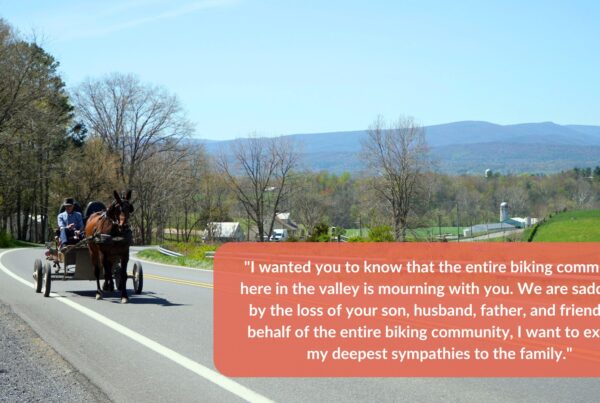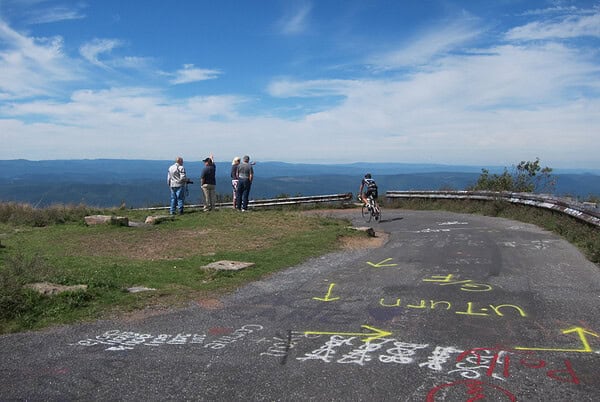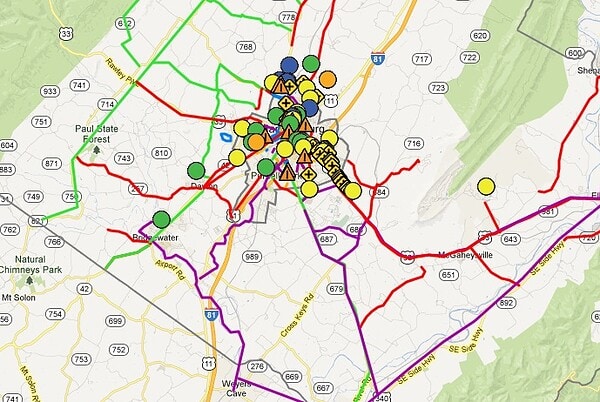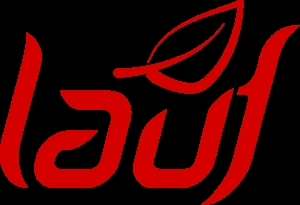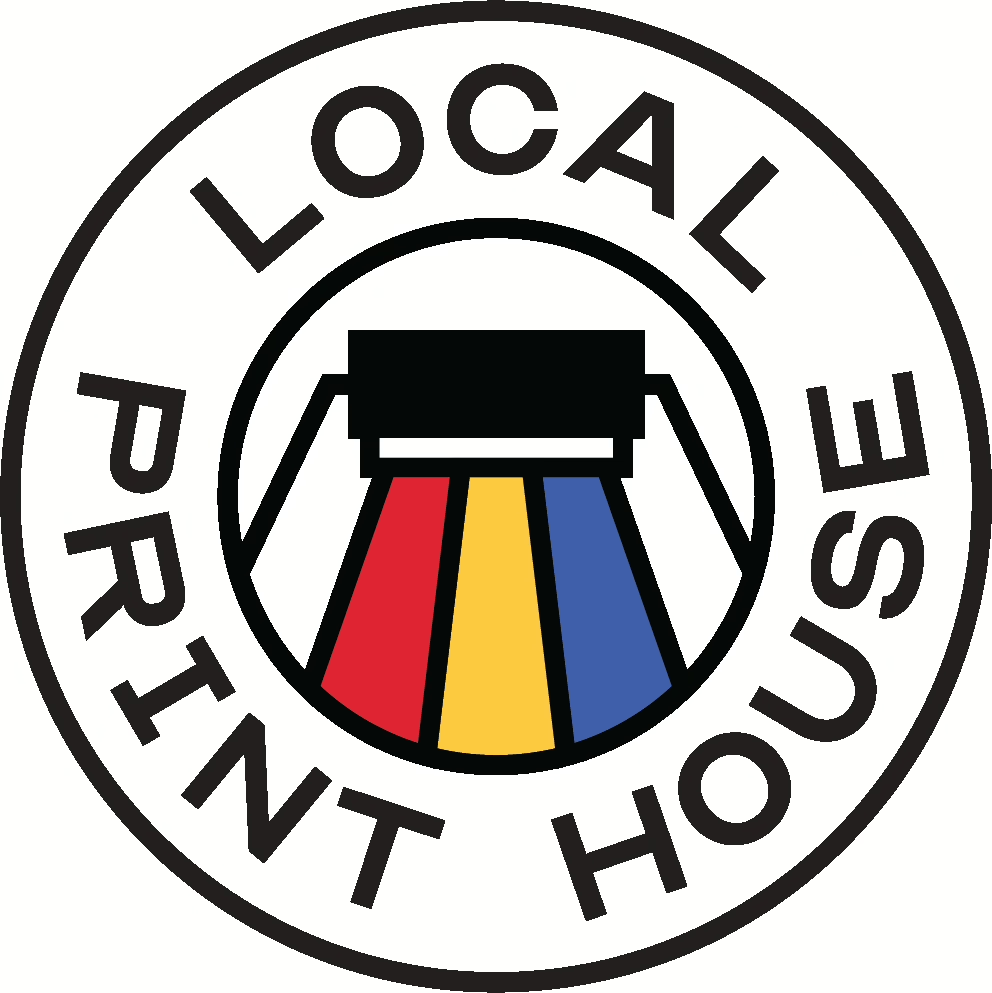DNR Covers a Unique Bicycling and Walking Workshop
Posted by Kyle September 22, 2012
Officials Discuss Bike, Pedestrian Plans
Funding, Safety Focus Of Workshop


A Harrisonburg Police Department bike officer shared how vehicles give him much more space to operate when he rides on-duty versus his own time. A James Madison University employee who lives in Bridgewater lamented that he has a daily “white knuckle” ride between Dayton and Harrisonburg because there is no sufficient path to travel on.
And Mayor Richard Baugh relayed the gist of an email from an angry city resident who could not understand why sidewalks would be constructed on East Market Street in front of Valley Mall. That area, the resident says, belongs to motorists.
“Not everything we’re going to be sharing here today is a universally held view,” Baugh said.
City and county officials, plus Massanutten Resort homeowners and representatives from other groups, gathered at the Lucy F. Simms Continuing Education Center for a free workshop on how to access federal funds for bicycle and pedestrian projects. Also, a vision shared by almost each one of the roughly 50 people in attendance was to make biking and walking safer in the area.
Advocacy Advance, a partnership between the League of American Bicyclists and the Alliance for Biking & Walking, held the daylong workshop. It says that states have spent $7.2 billion on 22,000 biking and walking projects since 1992, when federal dollars were first eligible for such efforts.
For 2013, Congress cut available funds from $1.2 billion to $808 million.
The workshop helped local officials and residents identify what makes a good project proposal for funding and when action should be taken to seek money. The advocacy group stresses that projects must have documented transportation, safety, air quality and congestion benefits.
Harrisonburg is ahead of the county with a bike-and-pedestrian plan that sets priorities for projects and estimates costs, Baugh said.
“Much of our community doesn’t grasp how far along our planning is,” he said. “We’re beyond this being largely a brainstorming exercise.”
To put those documented visions in place, resources and funds are needed, said Darren Flusche, policy director for the League of American Bicyclists.
“We’re out to help put Harrisonburg on the map,” he said.
Yet, at the same time, safety must be addressed, workshop attendees say. That can include physical improvements, such as wider shoulders along roadways, and a marketing campaign to raise awareness among drivers that the road is to be shared.
“We want to be the bicycling capital of Virginia,” said Rich Harris, the JMU employee who bikes from Bridgewater.
